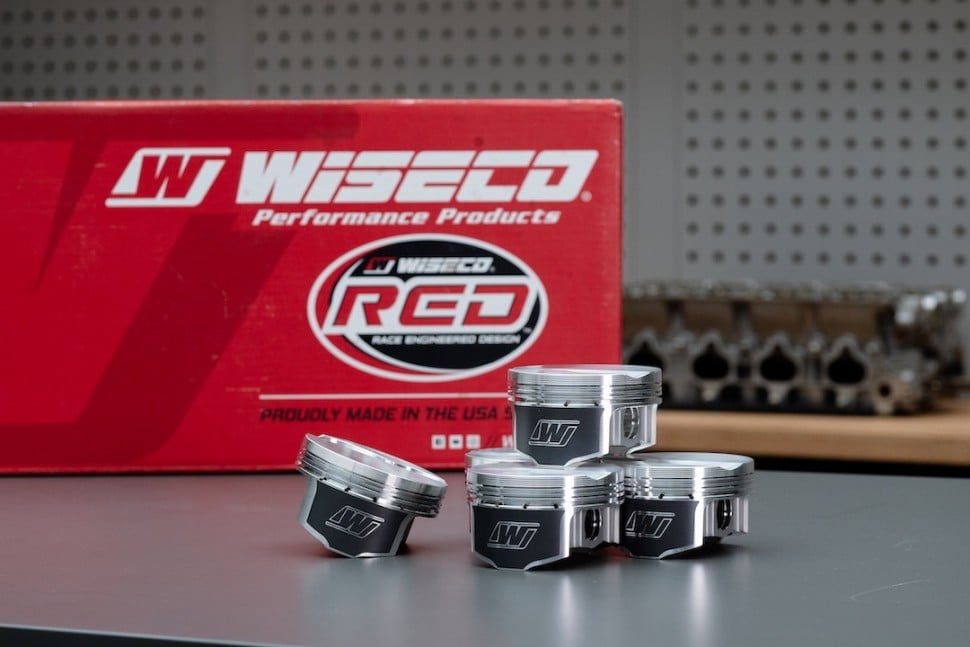| 00:00 |
- While this course will be concentrating for the main part on the engine short block, we will briefly touch here on the typical machining operations that are applied to a cylinder head.
|
| 00:11 |
The required machining tasks will be dependent on the condition of the head, however the two most important aspects of the cylinder head include how well the valves seal against the valve seats, and the condition of the cylinder head surface where it clamps against the head gasket.
|
| 00:29 |
Starting with the valve seating, this relies on the condition of the valves as well as the valve seats.
|
| 00:36 |
In days gone by, it was common practise to lap valves by hand using a valve grinding paste.
|
| 00:42 |
This isn't a technique that's common now, though, and in reality it can cause more harm than good.
|
| 00:48 |
While a very light lap with fine grinding paste can help confirm that the valve seat is in fact making good contact, heavy lapping tends to create a concave valve contact area, which only seals properly when the engine is cold.
|
| 01:05 |
Both the valve and valve seats will be carefully machined with multiple angles to promote good airflow, and ensure good sealing as the valve and head change in temperature and expand.
|
| 01:18 |
A less obvious aspect of the valve seat is that the valve uses this contact area to transfer heat out of the head of the valve and into the valve seat.
|
| 01:28 |
If the valve seat is damaged or seating poorly, this can quickly lead to burnt valves as they can't dissipate this heat quickly enough.
|
| 01:38 |
This is also why the exhaust valve seat is wider than the intake, as the exhaust valve understandably runs at a higher temperature.
|
| 01:47 |
Another area that relates to the valve seal is the condition of the valve guides.
|
| 01:53 |
The valve guides locate the valves and support them in the head, and these must be 100 per cent concentric with the valve seats in order to ensure good seating.
|
| 02:04 |
As the valve guides wear, the valve becomes sloppy in the guides and can move around, which reduces their ability to seal correctly.
|
| 02:13 |
In passenger car engines, it's common to either replace the guides with new OE valve guides, or, alternatively, the guide may be reamed out to a larger diameter before being fitted with a liner.
|
| 02:26 |
OE valve guides are normally made out of cast iron, which is inexpensive and offers a reasonable life expectancy, however, it doesn't handle the high loads that are typical with performance engines running aggressive cam profiles and high spring pressures, and they can crack or fracture, which can result in engine failure.
|
| 02:48 |
Cast iron valve guides also aren't ideally suited to use with stainless valves, as they can have a tendency to gall.
|
| 02:56 |
For these reasons, in competition engines, it's preferable to remove the factory valve guides and instead fit manganese-bronze valve guides.
|
| 03:05 |
These are compatible with both stainless and titanium valve materials, and are much stronger than a cast iron valve guide.
|
| 03:14 |
Now we'll move on to the deck surface of the cylinder head.
|
| 03:18 |
This requires the same attention to detail as the deck surface of the block that we've already discussed.
|
| 03:24 |
Here, we want a flat and smooth surface that will seal properly against the head gasket.
|
| 03:30 |
It's not uncommon for the deck surface to have minor low spots or minor scoring, and it's important to correct this.
|
| 03:38 |
In general, it will only be necessary to remove a very small amount of material, perhaps in the order of a few thousandths of an inch, however, we do need to be aware that particularly if the head is in poor shape, or if the head's been surfaced numerous times, this operation will effect the combustion chamber volume, and hence the compression ratio.
|
| 04:00 |
It will also have the effect of reducing the valve to piston clearance, as the valves will move closer to the crown of the piston.
|
| 04:09 |
Prior to performing any machining operations on the head, it's wise to check the head for hardness, which is a common task a machine shop will perform on an aluminium head.
|
| 04:20 |
When the head is manufactured, it will go through a heat treatment process to harden the aluminium material, which is essential for the head to be able to achieve a good seal against the head gasket.
|
| 04:32 |
If the engine has been overheated in operation, this can soften the aluminium head to the point where it's useless.
|
| 04:40 |
We want to check this before spending any more time and money on a flawed head casting.
|
| 04:47 |
While it is possible to have a soft cylinder head reheat treated to recover it, this is a major task that isn't normally financially viable, unless you're dealing with a very rare cylinder head, or one that's perhaps had a lot of money spent on port work already.
|





